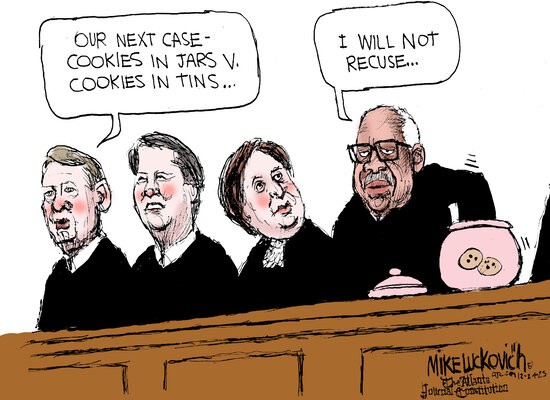Trump’s cruel purge of federal workers just got even easier
The Supreme Court recently cleared the way for one of President Donald Trump’s most sweeping promises yet: slashing the federal government and the workforce that keeps it running.
In a brief, unsigned order on Tuesday, the justices lifted a lower court ruling that had temporarily blocked Trump’s plans to lay off thousands of federal employees—including staff at the State Department—without first consulting Congress. The challenge to Trump’s broad reorganization is still working its way through the courts, but for now, the administration can move forward.
Technically, the decision is temporary. However, it effectively opens the door for Trump to begin dismantling large parts of the federal workforce, even if later court rulings find he overstepped his authority.

This marks another in a series of recent Supreme Court wins for Trump on emergency requests. Over the past few months, the court’s conservative majority has allowed the administration to fire independent regulators, dismiss probationary federal workers, and end protections for immigrants—all without waiting for full lower court rulings.
This time, Trump didn’t even need the full conservative bloc—Justices Elena Kagan and Sonia Sotomayor appeared to join the majority, with Sotomayor noting that agencies had been told to act “consistent with applicable law.” She, however, cautioned that whether the plans are legal remains undecided.
“The plans themselves are not before this Court,” she wrote, “we thus have no occasion to consider whether they can and will be carried out consistent with the constraints of law.”
But Justice Ketanji Brown Jackson wasn’t convinced. In a sharp 17-page dissent, she accused the court of rushing to create chaos.
“For some reason, this Court sees fit to step in now and release the President’s wrecking ball at the outset of this litigation,” she wrote. “This decision is not only truly unfortunate but also hubristic and senseless.”
The consequences are already starting. In January, Elon Musk’s so-called Department of Government Efficiency began a campaign to cut staffing and spending. Musk has since left Washington, but many agencies continue moving ahead. The Department of Veterans Affairs says it’s cutting nearly 30,000 jobs through attrition, deferred resignations, and retirements, although it will no longer seek deeper cuts. The State Department confirmed plans to eliminate 15% of its workforce, only delayed by the court decision. Now, Secretary of State Marco Rubio is expected to proceed.
“Today’s near-unanimous decision from the Supreme Court further confirms that the law was on our side throughout this entire process,” the State Department posted on X. “We will continue to move forward with our historic reorganization plan at the State Department, as announced earlier this year. This is yet another testament to President Trump’s dedication to following through on an America First agenda.”
Morale among federal workers—already battered by layoffs, chaos, and Musk’s failed productivity stunts—is likely to decline further. The American Federation of Government Employees, along with 11 nonprofits and six local governments, issued a joint statement criticizing the ruling, saying it “puts services that the American people rely on in grave jeopardy.”
They also said, “This decision does not change the simple and clear fact that reorganizing government functions and laying off federal workers en masse haphazardly without any congressional approval is not allowed by our Constitution.”
There is reason for skepticism. Earlier in Trump’s presidency, rushed firings often resulted in mistakes—employees being improperly let go or in ways that disabled entire offices. Some had to be quietly reinstated.
Still, this moment has been long in coming. Back in February, Trump ordered every federal agency to prepare for mass layoffs and restructuring as part of his effort to eliminate what he calls “waste” and “bloat.” Tuesday’s order gives him the legal space to begin making that vision a reality.
The order is just the latest example of how the Supreme Court has repeatedly supported Trump’s efforts to reshape the federal government through emergency legal channels. Whether limiting judicial checks on executive power or allowing the administration to bypass Congress entirely, the justices have increasingly given Trump room to act first and defend later.
The bigger picture is clear—Trump is steadily consolidating control over the federal government with the court’s support.
